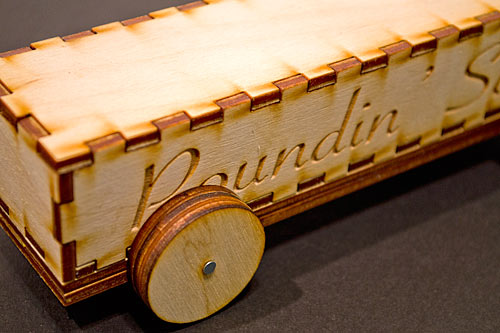So here’s the deal friends… Ben Nelson, fellow maker, DIY enthusiast, and Milwaukee Makerspace member, has won his fair share of contests over at Instructables, and it’s prompted me to give it a try as well, so I present to you my first Instructable: Creating Random Art for Puzzles.
And I’ll be totally honest, the main reason for me publishing it was to enter this contest to win a laser cutter from Hurricane Lasers. (I have no shame in telling you that!)
Ever since the Makerspace got a laser cutter, I’ve fallen in love, and it’s become my favorite tool, possibly even surpassing the RepRap. (Shhh, don’t tell the RepRaster 5000 that!) You’ve probably seen a few of my posts about things I’ve laser cut. Of course lately the laser cutter seem to break down every other week, so getting time to go to the space when it’s working is tough. Luckily, my friends at Lovesick Robot Studios helped me out with this project.

When I started on this project, I wasn’t even sure where it would go, but I wanted to explore the concept of introducing random elements into my art and see where it would take me. Well… this is the first stop: puzzles created with random art.

Of course if you know me, you know I also love making coasters… so I made puzzle coasters with random art in addition to a normal puzzle. (The “normal” puzzle was made with a printer, some board, and an X-ACTO knife. All the details are in the Instructable.)

So here’s the deal friends… I’d really appreciate if you vote for me in the contest, because if I win, I’ll get my own laser cutter… but rest assured, I won’t just keep it to myself. If you need something etched or cut, well, I may be able to help you out. I mean, if I win this contest. So yeah, I’d appreciate your vote.
So go to the page to vote. See the image at the top of this post which shows where the “VOTE” button is.) Also, since I took my sweet time, we’ve only got two days…. Voting ends the 20th, so don’t put it off… vote now! Don’t see the vote button? Make sure you log in. Don’t have an account? Create one!
Thanks!
Update: As of 2012-09-28 I have not been chosen as a finalist. Oh well.



























